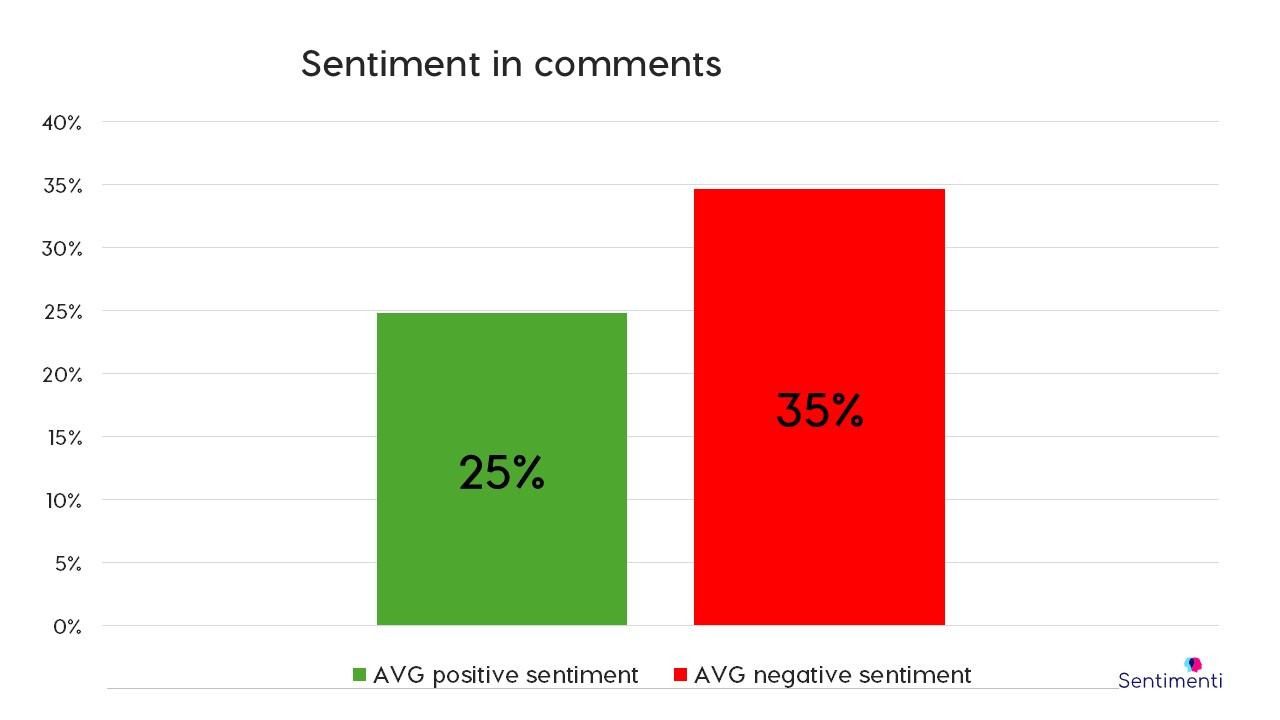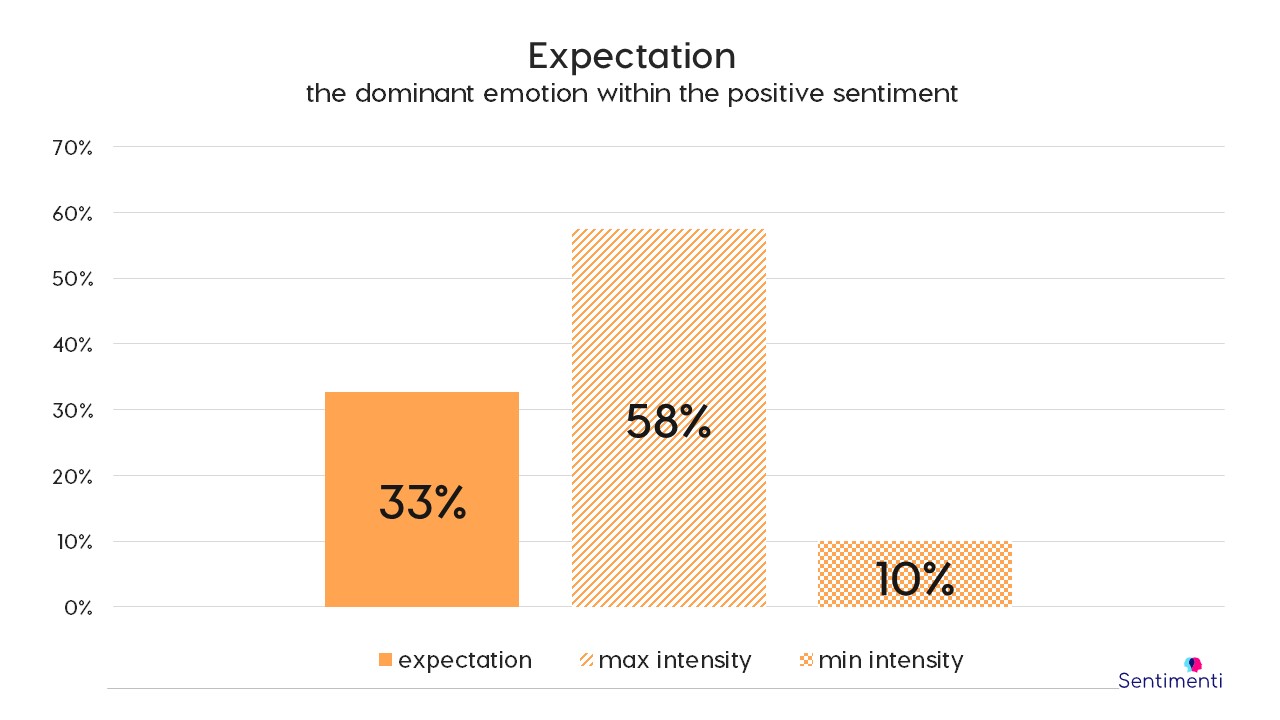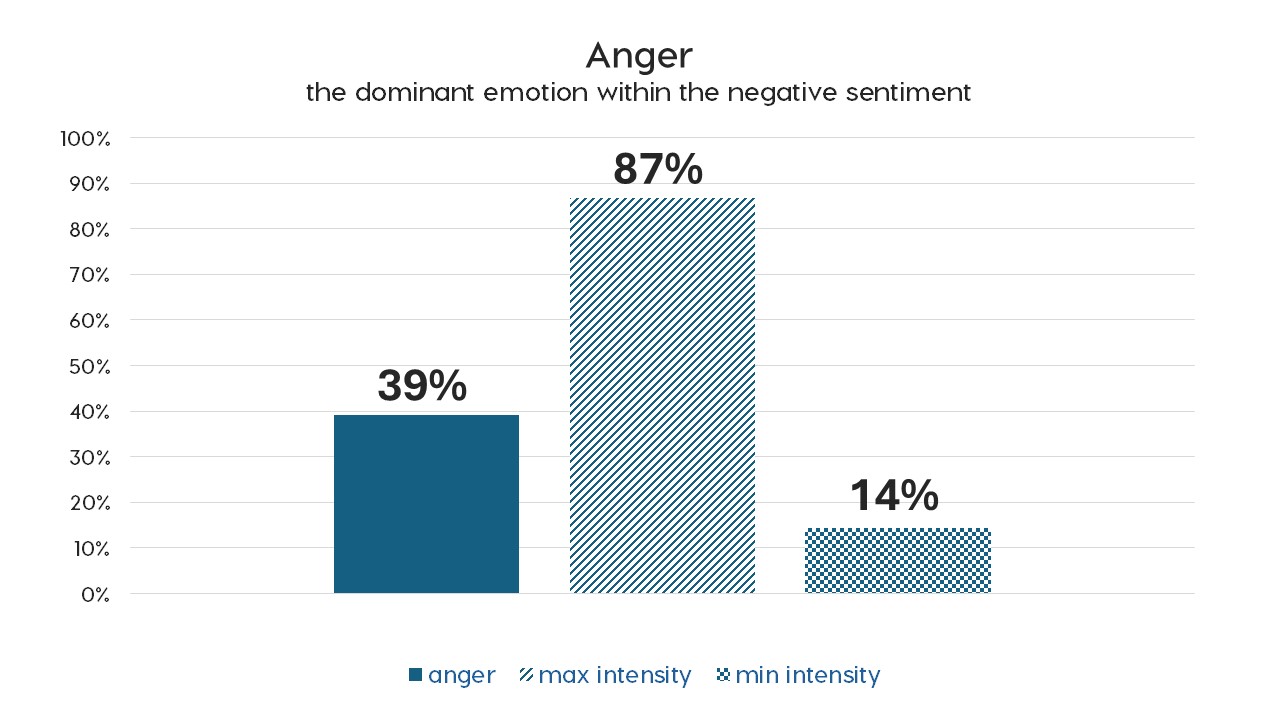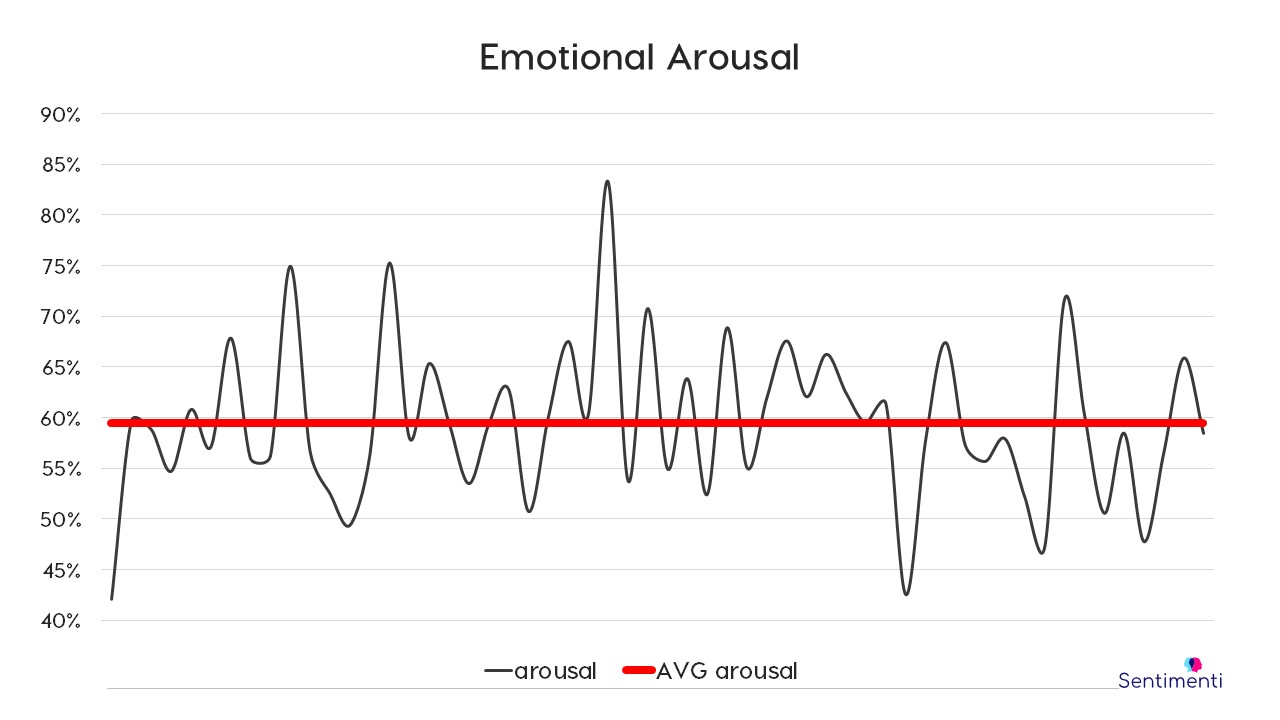On Platform X, The New York Times (NYT) has swept the post: „Donald Trump has boasted that, if he returns to office, he will dispatch forces to patrol the border, suppress protests and fight crime. His vision of using the military to enforce the law domestically would carry profound implications for civil liberties.”
Let’s take a look at the emotion in the comments under this post:
Sentiment in reader comments
We investigated what sentiment this post triggered in the audience – users of Platform X. For this purpose, we analyzed the comments posted under the NYT entry. In addition to the quantitative structure, we measured the intensity level of the sentiment expressed in the comments. The average intensity of negative sentiment was significantly higher than the average intensity of positive sentiment.

This simple measurement, however, does not answer the fundamental question: what did the readers-consumers of the NYT specifically feel when they read the posted entry. What emotion did the text evoke in them and does it matter in the evaluation. Only an in-depth analysis conducted in terms of measuring individual emotions provides an answer to such a question.
Dominant emotions in reader comments
The emotions we can measure include anger, fear, anticipation, surprise, trust, sadness, disgust, or joy. They are both components of positive or negative sentiment. Therefore, only the measurement of their intensity shows what we can expect from the behavior of their “owners.” After all, we react dramatically differently when we feel sadness (withdrawal) and when we feel anger (action). By merely concluding that negative sentiment prevails, we can infer very little. But to the point:
In the case studied, the dominant influence on the level of intensity of positive sentiment was the emotion of anticipation. Its intensity varied depending on the content of the comment and ranged from 10% to 58%.

In the case of negative sentiment – its level was decisively influenced by the emotion of anger expressed in the comments. Its intensity, as in the case of expectation, varied, ranging from 14% to 87%.

As can be seen from these measurements, the intensity of anger was stronger than the intensity of expectation in all cross-sections, and this built the overall negative perception of the information contained in the NYT entry.
Arousal – a measure of the involvement of comment authors
In addition to analyzing sentiment and the individual emotions that make it up, arousal was also measured, which was saturated with the content of readers’ comments. Stimulation most simply shows the level of engagement with which content authors express themselves. In this case, the average intensity of arousal remained very high reaching 59%.

In the case of arousal, too, there is a wide variation – a reflection of the commitment with which the individual author of the commentary expressed himself. The range of arousal intensity was from 42% to 83%. This, as well as the average intensity value, shows that the NYT entry triggered the need for readers to respond saturated with a very high layer of engagement.
Conclusion
Measuring sentiment alone is not enough to conclude how the author or authors will behave. Anger, present in the comments analyzed, suggests a strong commitment for the commenters, even indicating a desire to change the situation, an impulse to action triggered by the message. If, on the other hand, the dominant emotion was sadness, also seen in the category of negative sentiment. The conclusions could be quite different – indicating withdrawal of the majority of commenters, resignation and reluctant but acceptance of the state of affairs.
From an analysis of sentiment alone, all this will not be deduced and, most importantly, we will not learn about the future intentions of the recipient, reader or commenter, measuring only his mood, without going deeper, into emotions.
